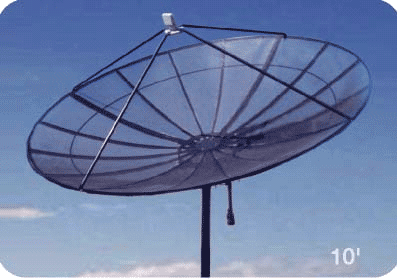Let's say you have a dish that looks like this:

Or this:

The idea being that it is a dish where the LNB is supported by four support arms coming from the outside rim or an inner support ring on the dish. Now if you have that kind of dish, is there any kind of kit you can buy that would let you attach TWO scaler rings and LNB's to receive nearby satellites? I think I remember reading somewhere that for some reason the minimum spacing was 4 degrees, due to the physical size of the scalar rings, and I don't know what the maximum would be, but let's say you wanted to receive (just as an example) a satellite at 99 degrees and another at 103 degrees, or maybe 105 degrees. Assuming one has no access to a metal shop and isn't real handy with fabricating parts, is there any kind of kit or bracket you could buy that would let you do this?
What about 3 LNB's on the same dish, would that be possible?
Any idea how much the signal might be degraded by not having one or two of the LNB's pointed at the direct center of the dish?
Or is none of this possible because the mounting poles would get in the way of any such arrangement?
Obviously I would want something like this for use with a fixed-position dish, not one that moves!

Or this:

The idea being that it is a dish where the LNB is supported by four support arms coming from the outside rim or an inner support ring on the dish. Now if you have that kind of dish, is there any kind of kit you can buy that would let you attach TWO scaler rings and LNB's to receive nearby satellites? I think I remember reading somewhere that for some reason the minimum spacing was 4 degrees, due to the physical size of the scalar rings, and I don't know what the maximum would be, but let's say you wanted to receive (just as an example) a satellite at 99 degrees and another at 103 degrees, or maybe 105 degrees. Assuming one has no access to a metal shop and isn't real handy with fabricating parts, is there any kind of kit or bracket you could buy that would let you do this?
What about 3 LNB's on the same dish, would that be possible?
Any idea how much the signal might be degraded by not having one or two of the LNB's pointed at the direct center of the dish?
Or is none of this possible because the mounting poles would get in the way of any such arrangement?
Obviously I would want something like this for use with a fixed-position dish, not one that moves!


 :
: